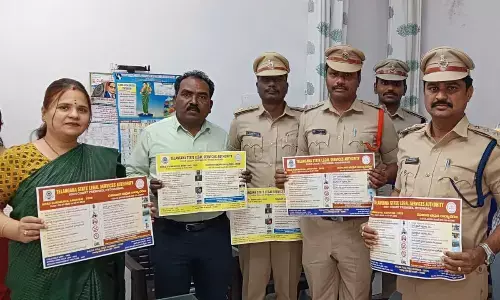Vision for India: A perfect 20/20 and more

Today is a very important day. Not only because it happens to usher in a brand new year but also because 2020 has a great significance.
Today is a very important day. Not only because it happens to usher in a brand new year but also because 2020 has a great significance. From the medical perspective a 20/20 vision is perfect vision.
For India its like a sign. A sign that says that you have a perfect vision! Vision of where the country has to go. A Vision of how it should grow.
Dr Abdul Kalam's Vision 2020 is perhaps the map that will lead us to the destination. Dr Kalam dreamt of 2020. His vision was to see an India where there is less rural-urban divide, adequate access to energy and quality water, education with a good value system and the best of healthcare available to all citizens and most importantly a nation where governance is responsive, transparent and corruption-free. He dreamt of a nation that is proud of its leadership.
Prime Minister Modi has taken us quite close to Dr Kalam's vision. For a country that created an Urban Ministry many decades after independence almost like an afterthought, Modi government conceived four mission programmes that are meant to infuse life into cities.
This vision of the Prime Minister should not be construed as favouring urban agenda at the cost of rural hinterland. His vision embraced 'new urbanism' a framework that helps evenly distribute urban gains throughout the entire rural ecosystem.
If India's economic assets are in the form of human capital and that asset class is being compromised by 'disease burden' Modi embarked on a nationwide health security net.
Ayushman Bharat, his flagship health accessibility scheme has protected 65 lakh people so far in just a few years thru a colossal support from of 7000 hospitals network across the nation
Dr Kalam mentioned about leadership – If bold reforms, connecting with citizens, cracking the whip against bureaucratic corruption, cleaning up institutions, integrating North-East, liberating Kashmir, passing CAA, providing housing, water, sanitation universally are a measure of leadership.
Then Modi is the boldest ever !
Am I saying that India achieved all that it has to? Is today's India, the India that Dr Kalam dreamt of ? Not really but we have achieved what I call visual acuity. Let me elaborate
Ask any ophthalmologist to know that just having 20/20 vision does not necessarily mean you have perfect vision. 20/20 vision only indicates the sharpness or clarity of vision at a distance.
Other important vision skills, including peripheral awareness, eye coordination, depth perception, focusing ability and colour vision, contribute to your overall visual ability.
India under Modi is all set to attain these complementary skills.
Peripheral vision
Most of our questions on geopolitics, economic resilience, foreign policy: Structural reforms are being addressed faster than we can express. It shows how our country is sharpening its peripheral vision and diplomatic outreach.
Eye coordination
India that swears by cooperative federalism tirelessly pursues its collaboration with states. But a bonus in the form of 'Slow death of left liberalism' has given India new allies in the world.
The world has seen a shift, a shift that I will not call tectonic but equally powerful. Most countries are being lead by strong leaders who have right wing leanings.
Today right-wing nationalist governments are in power in Russia, Turkey, India, Israel, Hungary, Poland, United States and Britain.
It's a known fact that Japan's Shinzo Abe has taken his conservative Liberal Party in a notably nationalist direction and so are parties in Australia.
With Angela Merkel announcing her intention not to run for re-election, it could mean a nationalistic party in Germany at the helm of affairs.
So how does this qualify as an eye -coordination skill that India wants to acquire? According to me this global trend has readied the stage for India for learning the ability to connect swiftly with allies for a geo-political dominant position.
By passing the Citizenship Amendment Act (CAA) and announcing National Register of Citizens (NRC), India is bound to integrate better into the new world order that rejects left liberalism.
How is that so is perhaps the question that the reader has right now. If one looks at what historically bothered these countries are threats to traditional norms and values, national Identity and immigration—yes illegal IMMIGRATION was the most intense issue.
Colour perception
Balakot air strikes, Triple Talaq Bill, repeal of Article 370, Ayodhya verdict, Citizen Amendment Act of Modi government demonstrate the rare skill of colour perception.
An expert in vision science will tell you that the complex nature of colour perception. It is impossible to predict even the approximate colour appearance of a patch in a scene without specifying the surrounding colours and the state of adaptation of the eye.
When the national fabric is tightly woven with multiple threads of different colours its quite difficult to pull out threads that are not in sync with the design. Abrogation of article 370 and the other similar examples amply prove this capability of Modi government.
Focusing ability
When IMF pronounced that The World Economy is experiencing synchronized slowdown and downgraded growth for 2019 to 3%, and Nomura announced that 'elephant will lose Stamina' specifically in the context of India, the country should have panicked.
It did, but just a little. With more than a just a sharp focus the country has been able to attract praise all over again.
Be it the market-friendly steps taken after corporate feedback, liberalization of FDI norms for select sectors; rollback of recently introduced tax surcharge on foreign portfolio investors; incentives to support several industries; bank consolidation; and the blockbuster cut in the corporate tax rate all of them have pulled back a so called sliding economy.
The efforts of Ease of doing business have been on consistently attracting praise from Foreign Institutional Investors (FIIs). A recent report based on the survey of business leaders from over 9,100 companies across 35 markets globally, says that India is the most attractive Asian market today.
Indian economy was $2 trillion in 2014 when Narendra Modi took over as Prime Minister of the country. We must recall that it took us 50 years to reach 1 trillion and another 25 years to reach $2 trillion. Today in just 5.5 years, Modi could bring it up to $3 trillion. If this isn't sharp focus what is?
A vision for $5 trillion is perhaps a modest vision for the Prime Minister.
According many scholars, visions articulated by countries tend to be a muddled stew of aspirations, goals and objectives. But not for this great nation. Our vision is neither muddled nor hazy.
Under PM Narendra Modi our Vision is to become a beacon light of hope for the world – A Vishwaguru. A perfect 2020 vision!
(The writer is BJP leader, president, Futuristic Cities, global thought leader, advisor on smart cities, governance & policy)















